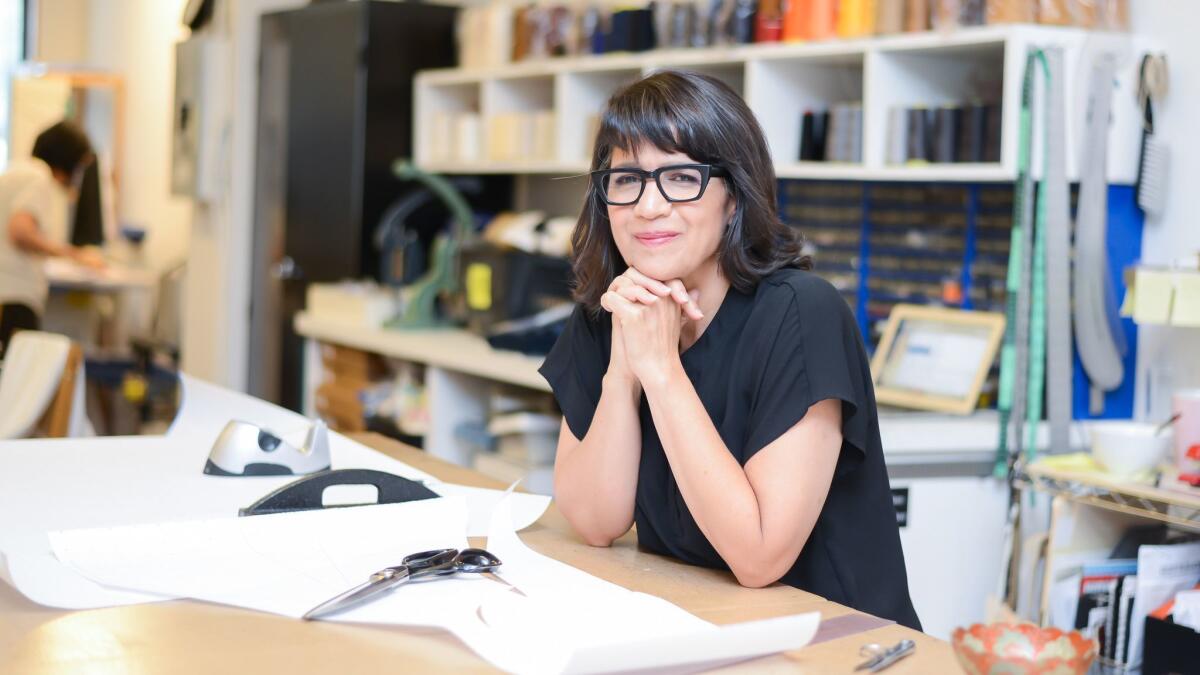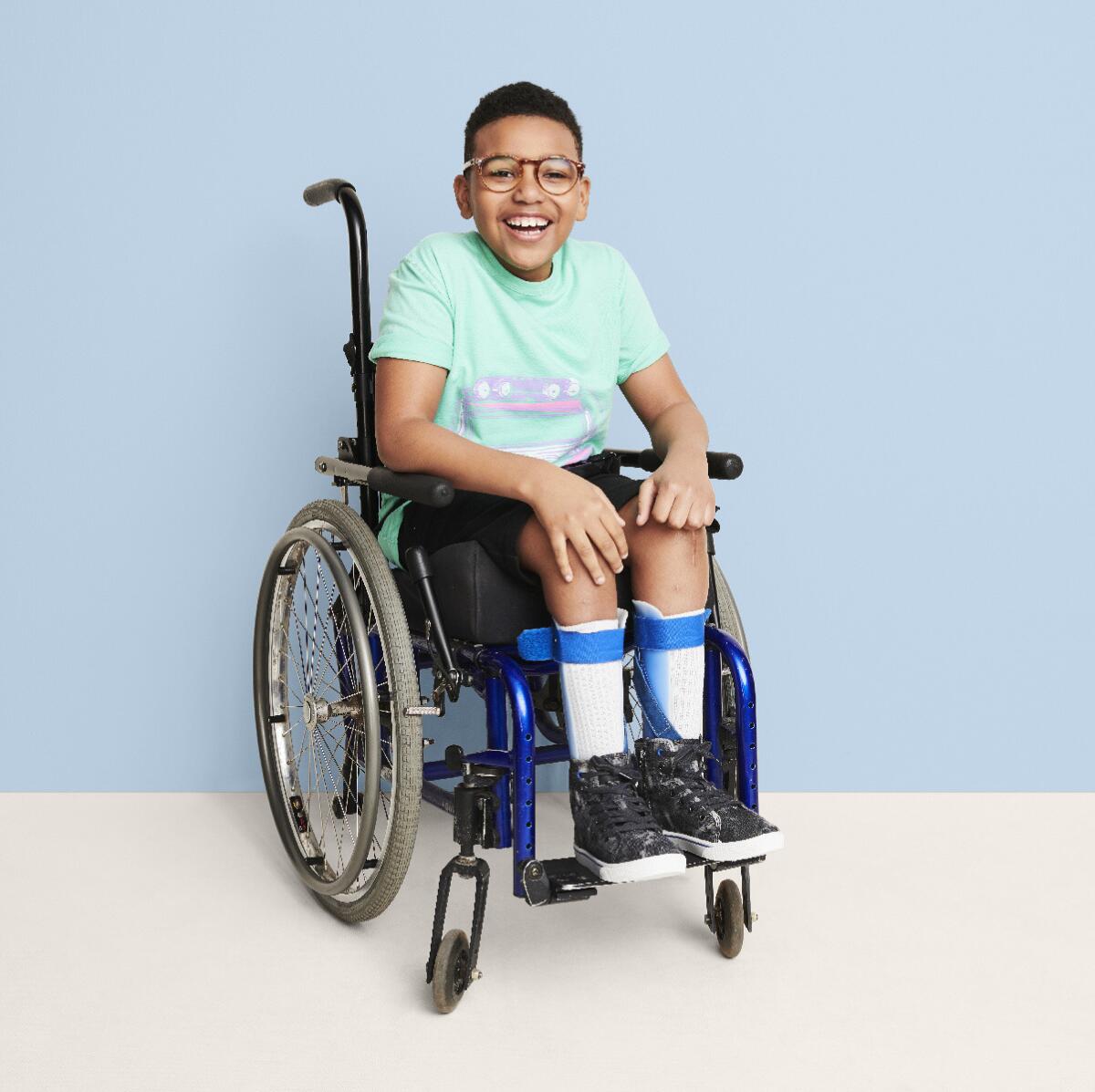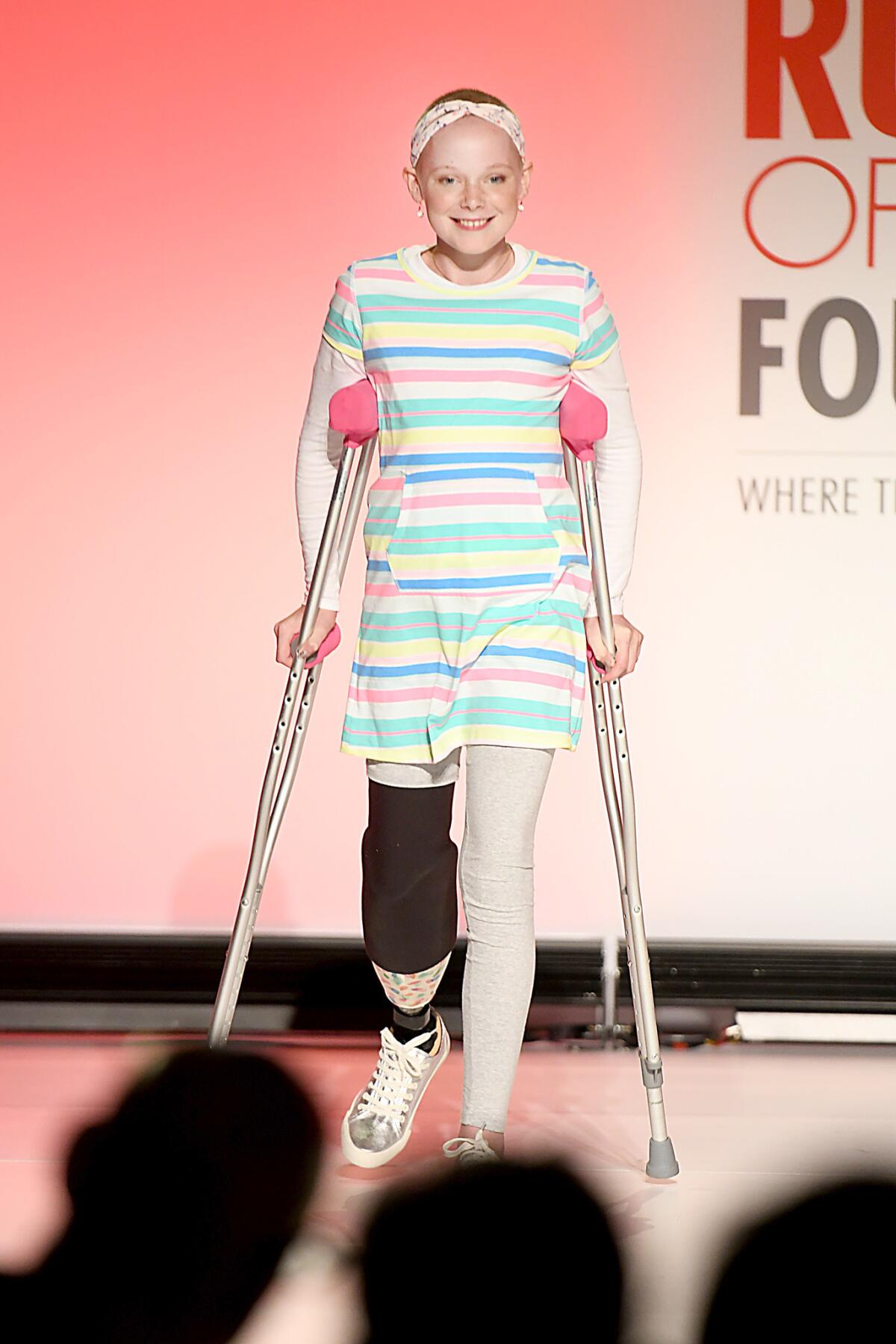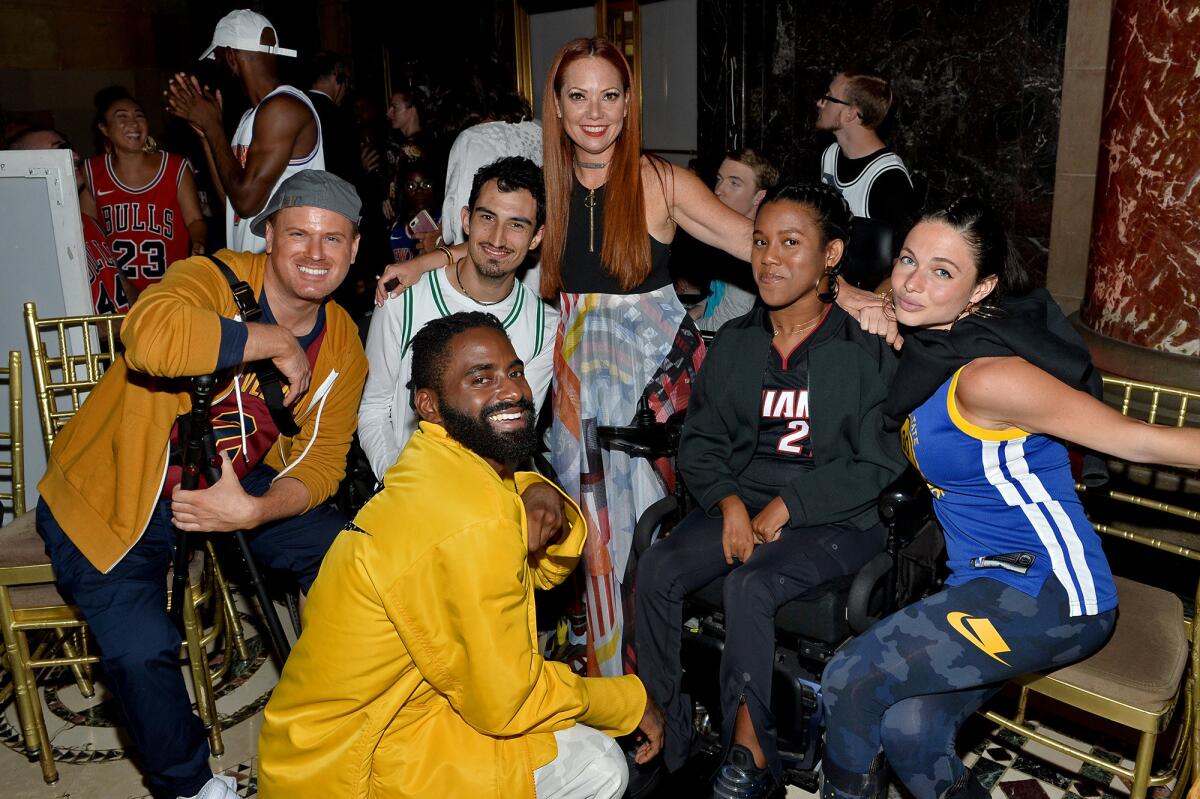Filling the fashion void for shoppers with disabilities
Although the multibillion-dollar global fashion industry has made efforts to embrace a wider range of body types, it’s way behind the inclusivity curve when it comes to dressing the estimated more than 1 billion people worldwide living with disabilities, according to a World Health Organization and World Bank report. That number includes more than 60 million Americans who might be looking for adaptive fashion options to fulfill their own sartorial needs as well as greater visibility in ad campaigns, on fashion runways and in Hollywood.
Toronto fashion designer Izzy Camilleri came to know the adaptive fashion market well. She first made a splash when Meryl Streep wore her $10,000 silver fox-fur coat in the 2006 film “The Devil Wears Prada.” Form-fitting leather pieces were a signature of her now-defunct namesake brand. However, in 2009 Camilleri made a 180-degree sartorial turn with a pioneering new line of timeless basics for female wheelchair users. Inspiration came from the late Toronto Star journalist Barbara Turnbull, who was quadriplegic after being shot during a robbery. She came to Camilleri in search of a shearling cape.
“I’d never worked with someone with a disability, and it was eye-opening. I started to realize all of her issues with clothing,” Camilleri said. “When I decided to do the line and researched what was out there, I Googled ‘wheelchair clothes’ and what came up was all dated-looking polyester clothing [catering to] the elderly or people living in long-term care. If you were 20 years old and had to start wearing adaptive clothing, those were the only options in 2009. So I started with what every wardrobe needs: jeans, dress pants, T-shirts, a suit, a coat, a bra.”
After all, amputees and people with autism or limited mobility because of spinal cord injuries, muscular diseases, strokes or orthotics want to be able to wear the clothes that work for them and clothes that they also love.

During the past decade, select fashion companies, including Tommy Hilfiger, have started creating adaptive styles. This year, Camilleri’s IZ Adaptive (izadaptive.com) label was able to relaunch with help from social-minded Toronto investment firm Good & Well. Styles for men and women, ranging from $16 to $425, include designs for people who are ambulatory.
Adaptive fashion designs commonly include zippers with pull tabs, Velcro, magnetic or hook-and-loop closures in place of buttons, adjustable hems and waists, breathable stretch fabrics and openings at the shoulders, back and sides that make dressing easier, while accommodating braces or casts. Pants for wheelchair users have a higher rise in back and are devoid of back pockets, seaming and details that can cause chafing. And sensory-friendly items often have flat seams, no tags and ultra-soft fabrics.
Stephanie Alves similarly stepped away from a career in corporate fashion design to found the Able Tailor in Los Angeles in 2011 when her stepsister, who uses a wheelchair after failed back surgery, could not find any fashionable clothing. Alves’ business altered clothing for people living with disabilities, but in 2013 it morphed into ABL Denim, which makes adaptive and sensory-friendly jeans for men, women and children (starting at $32, abldenim.com). Up next for the brand? A jean for amputees and a denim vest with a hidden pneumatic pressure system to soothe autism-related anxiety. The latter piece was inspired by a customer’s request for an alternative to her child’s unattractive weighted compression vest.
“There is so much development in thin smart fabrics with detective and conductive qualities,” said Alves, who partners with bioengineers on her designs. “For several years, I’ve made leg warmers that hold sensors to monitor neuro-motor development for research doctors at USC and UCLA. Wearable tech is the future of healthcare. So why not make our clothes more functional?”
Moving into the adaptive fashion market

Making clothing more functional is something the Tommy Hilfiger brand is exploring with its adaptive line. “I’ve seen the challenges associated with dressing children with autism first hand,” said designer Tommy Hilfiger, who has children diagnosed on the autistic spectrum. “So I understood the potential impact of an adaptive collection.”
In 2016, Tommy Hilfiger became the first large U.S. fashion brand to launch an adaptive line for children. It has now expanded into men’s and women’s clothes. Hilfiger said Gary Sheinbaum, chief executive of Tommy Hilfiger Americas, brought the idea of the line to him. “I was surprised no one had thought of this before,” Hilfiger said. “It took over two years of research by our teams to launch the collection, but it was an incredible collaboration with the community. We’ve received countless messages from customers, caretakers and organizations around the world speaking to the impact of this collection. It is humbling to hear how fashion can change a life.”
A few other major brands have extended into adaptive fashion with others likely to follow their lead. Global retail market research firm Coresight Research projects that the U.S. adaptive fashion market will reach $44.5 million this year and $51.1 million by 2022, and the global adaptive fashion market will hit $278.2 billion this year and grow to $325.8 billion by 2022.
More than three years ago, Nike introduced FlyEase, a zipper system at the back of shoes so feet can slide in, with wider widths to accommodate orthotics. Target debuted adaptive and sensory-friendly styles in its Cat & Jack children’s line in 2017 and this spring it included adaptive women’s jeans in the size-inclusive Universal Thread collection. Last year also marked the advent of Zappos Adaptive, a section of the e-tail site dedicated to adaptive styles.
Championing the cause

Mindy Scheier, who founded the Runway of Dreams foundation in 2014, is one of the ultimate driving forces behind the adaptive fashion movement. Her New Jersey-based nonprofit works to “broaden the reach of adaptive clothing and promote the differently-abled community in the fashion industry,” she said.
In other words, Scheier educates brands on exactly how to modify their products and advocates for inclusion in ad campaigns and job opportunities because about 80% of people with disabilities in the U.S. are not in the workforce, she said, referring to a 2018 labor force participation statistic from the U.S. Department of Labor. The idea for the nonprofit was sparked when Scheier’s teenage son Oliver, who was born with a rare form of muscular dystrophy, told her that he just wanted to wear jeans to school like everyone else. Runway of Dreams had its third annual gala in September during New York Fashion Week. Thirty diverse models with disabilities (including Chelsie Hill, a wheelchair user who founded the L.A.-based Rollettes wheelchair dance team) took to the runway in adaptive fashions by Tommy Hilfiger, Nike and Target. Scheier hopes to debut a similar event in Los Angeles in 2019.

“I’m trying to change an industry, to open the eyes of mainstream brands to let them know of this enormous population that isn’t being served. It is a huge business opportunity,” said Scheier, who is working with the aforementioned brands as well as Macy’s and Bloomingdale’s. “The first brand that saw my vision and that we collaborated with was Tommy Hilfiger in 2016,” she continued. “They immediately got it, and I feel incredibly lucky that they’ve been on the journey with us. I’ve never felt more sure that adaptive will be the next category in our fashion world — no different than plus-size, petites and maternity. It’s just a different shaped body that we have to include in the fashion conversation, and we’re getting there.”
Stephanie Thomas, an L.A.-based fashion styling expert for people with disabilities (cur8able.com), styled the Nike looks in the Runway of Dreams show and is a congenital amputee missing toes and fingers. Thomas said the Americans With Disabilities Act requires stores to provide ramps and wheelchair-accessible dressing rooms, but there isn’t much, if any, adaptive clothing on retail floors for people with disabilities to buy. “At the same time, there is beautiful clothing designed for every pet body type. They have more fashionable options than people with disabilities,” she said. “It’s attitudinal. People see the value in dressing their pets, and now people with disabilities are starting to be valued as fashion customers. A lot of the shift is simply social media. People who were once not seen are now seen.”

For fashion news, follow us at @latimesimage on Twitter.



